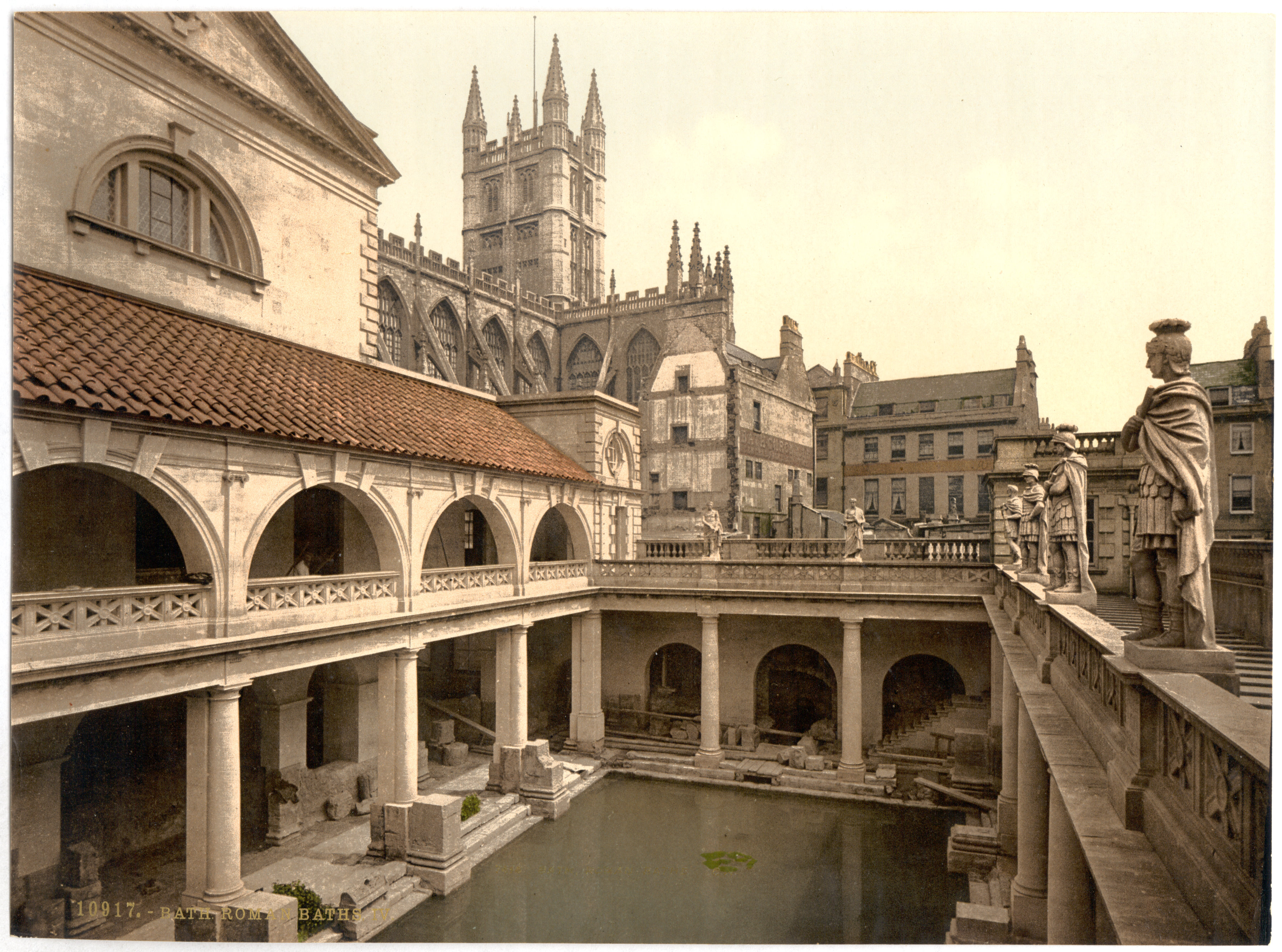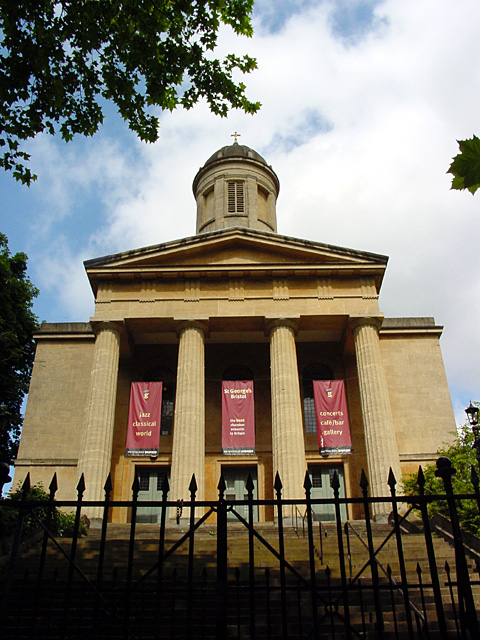|
John Lowder
John Lowder was an architect and surveyor working in Bath, Somerset, England. He was the Bath City Surveyor for a short time. In Bath, he designed the Commissioners' church A Commissioners' church, also known as a Waterloo church and Million Act church, is an Anglican church in the United Kingdom built with money voted by Parliament as a result of the Church Building Acts of 1818 and 1824. The 1818 Act supplied ... of Holy Trinity, James Street, (1819–1822) in the classical style but it was constructed in a Gothic style. Declared redundant after being severely damaged by bombing in 1942, the structure was demolished in 1957 and its congregation moved to a neighbouring church, which has subsequently been renamed Holy Trinity, Queens Square. List of works *Rectory, now Bishopstone House, Bishopstone near Salisbury, 1812–1819 *The National School, Bath, 1816–1818 (demolished in the late 1960s) *Holy Trinity, James Street, 1819–1822 (demolished in the late 1950s) Foo ... [...More Info...] [...Related Items...] OR: [Wikipedia] [Google] [Baidu] |
Bath, Somerset
Bath () is a city in the Bath and North East Somerset unitary area in the ceremonial counties of England, county of Somerset, England, known for and named after its Roman Baths (Bath), Roman-built baths. At the 2021 Census, the population was 101,557. Bath is in the valley of the River Avon (Bristol), River Avon, west of London and southeast of Bristol. The city became a World Heritage Site in 1987, and was later added to the transnational World Heritage Site known as the "Great Spa Towns of Europe" in 2021. Bath is also the largest city and settlement in Somerset. The city became a spa with the Latin name ' ("the waters of Sulis") 60 AD when the Romans built Roman Baths (Bath), baths and a temple in the valley of the River Avon, although List of geothermal springs in the United Kingdom, hot springs were known even before then. Bath Abbey was founded in the 7th century and became a religious centre; the building was rebuilt in the 12th and 16th centuries. In the 17th ce ... [...More Info...] [...Related Items...] OR: [Wikipedia] [Google] [Baidu] |
Bath City Surveyor
The prominent post of Bath City Architect and Surveyor was bestowed by the Corporation of Bath, Somerset, England, on an architect who would be repeatedly chosen for civic projects. The posts were often bestowed separately with surveyor being the first appointment. Surveyors such as Lowder never shared the title with that of City Architect. * Thomas Warr Attwood (unofficially) –1775 * Thomas Baldwin 1776–1792 * John Palmer 1792–1817 * John Lowder John Lowder was an architect and surveyor working in Bath, Somerset, England. He was the Bath City Surveyor for a short time. In Bath, he designed the Commissioners' church A Commissioners' church, also known as a Waterloo church and Milli ... 1817–1823 * George Phillips Manners 1823–1862 See also * Bath City Architect References *Bath City Surveyor City Surveyor 1776 establishments in England Surveyor {{UK-architect-stub ... [...More Info...] [...Related Items...] OR: [Wikipedia] [Google] [Baidu] |
Commissioners' Church
A Commissioners' church, also known as a Waterloo church and Million Act church, is an Anglican church in the United Kingdom built with money voted by Parliament as a result of the Church Building Acts of 1818 and 1824. The 1818 Act supplied a grant of money and established the Church Building Commission to direct its use, and in 1824 made a further grant of money. In addition to paying for the building of churches, the Commission had powers to divide and subdivide parishes, and to provide endowments. The Commission continued to function as a separate body until the end of 1856, when it was absorbed into the Ecclesiastical Commission. In some cases the Commissioners provided the full cost of the new church; in other cases they provided a partial grant and the balance was raised locally. In total 612 new churches were provided, mainly in expanding industrial towns and cities. Title The First Parliamentary Grant for churches amounted to £1 million (equivalent to £ in ... [...More Info...] [...Related Items...] OR: [Wikipedia] [Google] [Baidu] |
Bishopstone, Salisbury
Bishopstone is a village and civil parish in Wiltshire, England, in the Ebble valley about south-west of Salisbury. The parish is on the county boundary with Hampshire and includes the small village of Croucheston and the hamlet of The Pitts (now Pitts Road). History The area was settled in prehistoric times. There was a bowl barrow near Croucheston Down Farm and Grim's Ditch, a prehistoric earthwork, forms the southern boundary of the parish. The Roman road from Old Sarum to Dorchester crosses the river near Throope. Before the 10th century, much of the land forming the present-day parish was part of a large estate called Downton. Early in the 10th century a manor at what is now Bishopstone was granted to Winchester Abbey as an early endowment; around that time the whole river valley was known as Ebbesborne, and the village had the same name. A prefix "Bishop's" was sometimes used to distinguish the village from another in the same valley, and in the later Middle A ... [...More Info...] [...Related Items...] OR: [Wikipedia] [Google] [Baidu] |
Yale University Press
Yale University Press is the university press of Yale University. It was founded in 1908 by George Parmly Day, and became an official department of Yale University in 1961, but it remains financially and operationally autonomous. , Yale University Press publishes approximately 300 new hardcover and 150 new paperback books annually and has a backlist of about 5,000 books in print. Its books have won five National Book Awards, two National Book Critics Circle Awards and eight Pulitzer Prize The Pulitzer Prize () is an award for achievements in newspaper, magazine, online journalism, literature, and musical composition within the United States. It was established in 1917 by provisions in the will of Joseph Pulitzer, who had made h ...s. The press maintains offices in New Haven, Connecticut and London, England. Yale is the only American university press with a full-scale publishing operation in Europe. It was a co-founder of the distributor TriLiteral LLC with MIT Press ... [...More Info...] [...Related Items...] OR: [Wikipedia] [Google] [Baidu] |
John Palmer Of Bath
John Palmer (c. 1738 – 19 July 1817) was an English architect who worked on some of the notable buildings in the city of Bath, Somerset, UK. He succeeded Thomas Baldwin as City Architect in 1792. He died in Bath. Some works * St James' Church, Bath, on Stall Street (1768–1769, demolished for the Marks & Spencer building) * St James's Parade (1768) * Cottles House, now Stonar School, Atworth, Wiltshire (1775) * Church of St Swithin, Bath, The Paragon, Bath (1777–1780) * Shockerwick House, Bathford, Somerset (1785) * Lansdown Crescent, Bath, and the adjacent Lansdown Place West and Lansdown Place East (1789-1793) * Cross Bath remodelled by Palmer after work by Thomas Baldwin (1789) * Grand Pump Room, Bath, begun in 1789 by Thomas Baldwin who resigned in 1791; Palmer continued the scheme * St George's Place (c.1790) * Cumberland House, Norfolk Crescent, Bath (c. 1790–1800, continued by John Pinch after 1810) * Park Street (1790-1793) * 1-8, Bath Street (1791-1 ... [...More Info...] [...Related Items...] OR: [Wikipedia] [Google] [Baidu] |
George Phillip Manners
George Phillips Manners (1789 – 28 November 1866) was a British architect, Bath City Architect from 1823 to 1862. In his early career he worked with Charles Harcourt Masters and after about 1845 was in partnership with C.E. Gill. He retired in 1862. Architectural practice The architectural practice of George Phillips Manners from the early 19th century into the mid-20th century (compiled by Michael Forsyth in '' Pevsner Architectural Guide: Bath'', 2003): *George Phillips Manners: 1820–1845 *Manners & Gill: 1845–1866 *John Elkington Gill: 1866–1874 *Gill & Browne 1874–1879 *Browne & Gill: 1879–1899 *Gill & Morris: 1899–1903 * Wallace Gill: 1903–1909 * Mowbray A. Green: 1909–1914 * Mowbray A. Green & Hollier: 1914–1947 *Frank W. Beresford-Smith: 1947– (and later acquired by Beresford-Smith’s son) From 1846 to 1909, the practice was located at No. 1 Fountain Building. List of works His works include a number of churches, initially in Perpendicular or Norm ... [...More Info...] [...Related Items...] OR: [Wikipedia] [Google] [Baidu] |
19th-century English Architects
The 19th (nineteenth) century began on 1 January 1801 ( MDCCCI), and ended on 31 December 1900 ( MCM). The 19th century was the ninth century of the 2nd millennium. The 19th century was characterized by vast social upheaval. Slavery was abolished in much of Europe and the Americas. The First Industrial Revolution, though it began in the late 18th century, expanding beyond its British homeland for the first time during this century, particularly remaking the economies and societies of the Low Countries, the Rhineland, Northern Italy, and the Northeastern United States. A few decades later, the Second Industrial Revolution led to ever more massive urbanization and much higher levels of productivity, profit, and prosperity, a pattern that continued into the 20th century. The Islamic gunpowder empires fell into decline and European imperialism brought much of South Asia, Southeast Asia, and almost all of Africa under colonial rule. It was also marked by the collapse of the la ... [...More Info...] [...Related Items...] OR: [Wikipedia] [Google] [Baidu] |
Architects From Bath, Somerset
An architect is a person who plans, designs and oversees the construction of buildings. To practice architecture means to provide services in connection with the design of buildings and the space within the site surrounding the buildings that have human occupancy or use as their principal purpose. Etymologically, the term architect derives from the Latin ''architectus'', which derives from the Greek (''arkhi-'', chief + ''tekton'', builder), i.e., chief builder. The professional requirements for architects vary from place to place. An architect's decisions affect public safety, and thus the architect must undergo specialized training consisting of advanced education and a ''practicum'' (or internship) for practical experience to earn a license to practice architecture. Practical, technical, and academic requirements for becoming an architect vary by jurisdiction, though the formal study of architecture in academic institutions has played a pivotal role in the development of the ... [...More Info...] [...Related Items...] OR: [Wikipedia] [Google] [Baidu] |
Year Of Birth Missing
A year or annus is the orbital period of a planetary body, for example, the Earth, moving in its orbit around the Sun. Due to the Earth's axial tilt, the course of a year sees the passing of the seasons, marked by change in weather, the hours of daylight, and, consequently, vegetation and soil fertility. In temperate and subpolar regions around the planet, four seasons are generally recognized: spring, summer, autumn and winter. In tropical and subtropical regions, several geographical sectors do not present defined seasons; but in the seasonal tropics, the annual wet and dry seasons are recognized and tracked. A calendar year is an approximation of the number of days of the Earth's orbital period, as counted in a given calendar. The Gregorian calendar, or modern calendar, presents its calendar year to be either a common year of 365 days or a leap year of 366 days, as do the Julian calendars. For the Gregorian calendar, the average length of the calendar ye ... [...More Info...] [...Related Items...] OR: [Wikipedia] [Google] [Baidu] |






